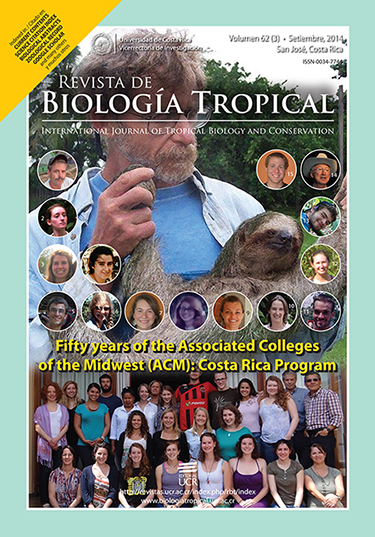Resumen
Estudios sobre aspectos reproductivos, morfología y ultraestructura de las esporas de Lycopodiaceae no son abundantes en la literatura científica y constituyen información esencial para apoyar las relaciones taxonómicas y sistemáticas en el grupo. Con el fin de completar la información existente, añadiendo contribuciones nuevas y más amplias sobre estos temas, se realizó un análisis comparado de la ultraestructura de la esporogénesis, con énfasis en aspectos citológicos que tienen que ver con la formación de la cubierta de los esporocitos, el tapete, las meiosis monoplastidial y poliplastidial, la ontogenia del esporodermo y la ornamentación de las esporas maduras en 43 táxones de ocho géneros de Lycopodiaceae: Austrolycopodium, Diphasium, Diphasiastrum, Huperzia (incluyendo Phlegmariurus), Lycopodium, Lycopodiella, Palhinhaea y Pseudolycopodiella que crecen en los Andes de Colombia y el Neotrópico. Para estudios con microscopía electrónica de trasmisión (MET) las muestras se recolectaron en los departamentos de Cauca y Valle del Cauca, mientras que la mayoría de las muestras para microscopía electrónica de barrido (MEB) provienen de material herborizado de colecciones. Para la observación de las muestras con MET y MEB se utilizaron protocolos estándar para el procesamiento de esporas. La cubierta de los esporocitos está formada por pared primaria; los esporocitos invierten gran parte de su actividad metabólica en la producción de esa cubierta, que es mantenida hasta la liberación de las esporas y tiene funciones de protección de las células que harán meiosis. La abundancia de dictiosomas en los esporocitos se relacionó con la formación y desarrollo de la cubierta. Además de la actividad de los microtúbulos, la presencia de sinuosidades y plegamientos asociados con material electro denso en la membrana de los esporocitos determinarían tempranamente los patrones de ornamentación de las esporas. La condición monoplastidial es común en Lycopodium s.l.y la poliplastidial se observó en Huperzia y Lycopodiella s. l. En especies monoplastidiales el tapete presenta abundantes cuerpos plurivesiculares, en las poliplastidiales la actividad secretora del tapete es menos intensa. El desarrollo del esporodermo es centrípeto, el exosporio se forma primero, seguido del endosporio y el perisporio, si está presente, se deposita de último. En las esporas adultas de Lycopodiaceae se encontraron dos patrones de ornamentación: negativo o caviforme (esporas foveoladas) y positivo o muriforme (esporas rugadas y reticuladas). Las esporas foveoladas son características de Huperzia; las rugadas de unas pocas especies de Huperzia y las especies de Lycopodiella s. l., mientras que las reticulada son típicas de Lycopodium s. l.. Numerosos caracteres de la ornamentación resultan diagnósticos en el nivel específico. Los tipos principales no apoyan la extrema fragmentación reciente de la familia en varios géneros, aunque podría coincidir, a priori, con la idea de tres subfamilias. Los hallazgos de la esporogénesis, extremadamente similar en todos los táxones estudiados, apuntan más a la unificación de los géneros en la familia que a su segregación.##plugins.facebook.comentarios##

Esta obra está bajo una licencia internacional Creative Commons Atribución 4.0.
Derechos de autor 2014 Revista de Biología Tropical
Descargas
Los datos de descargas todavía no están disponibles.






